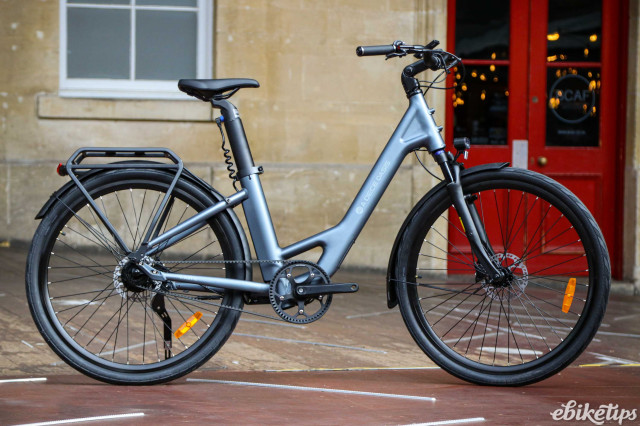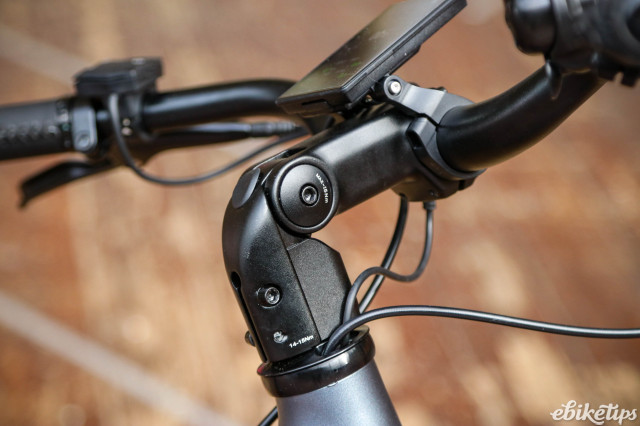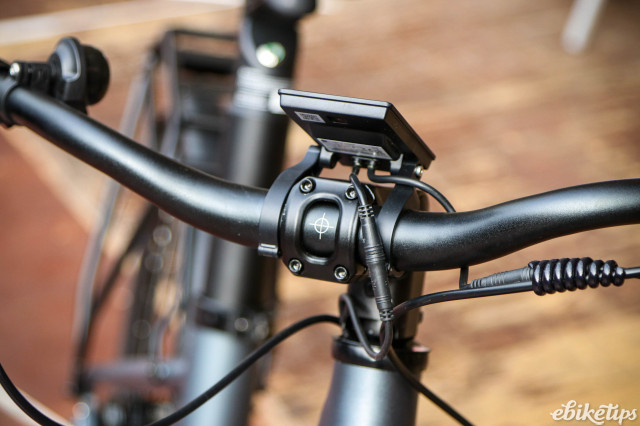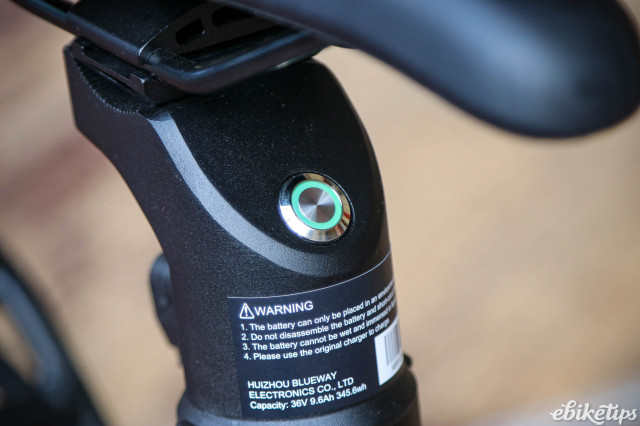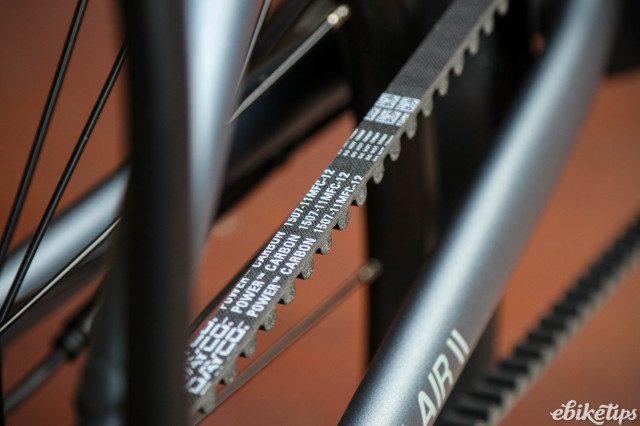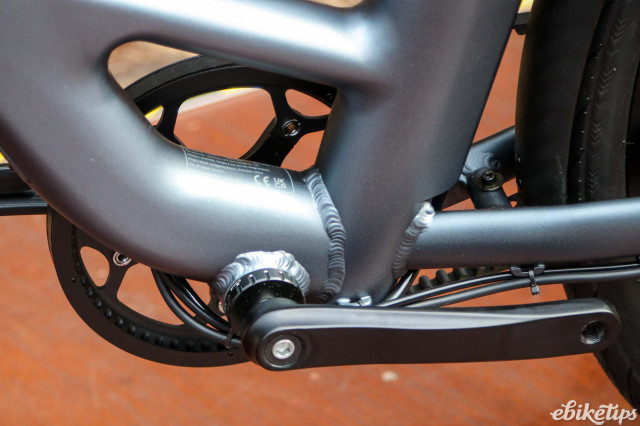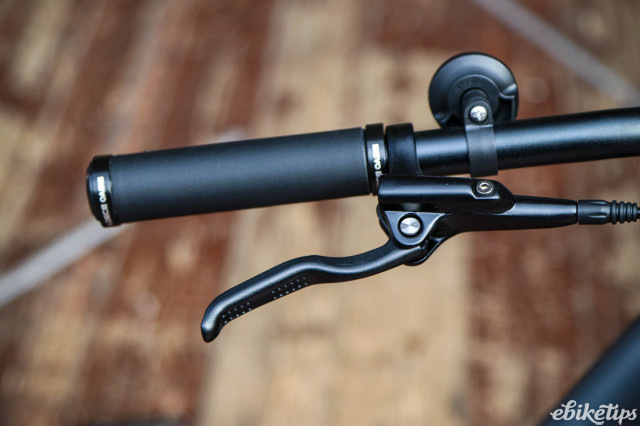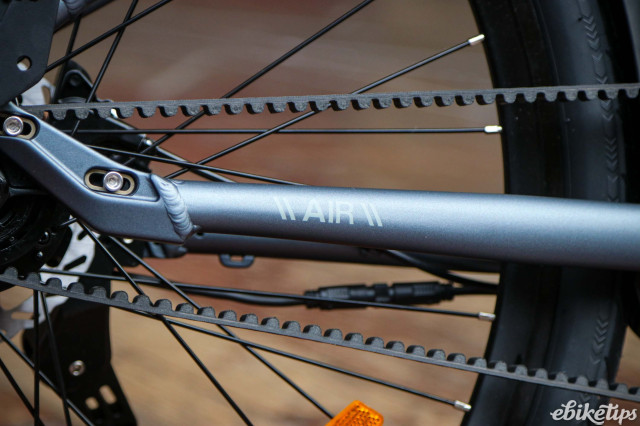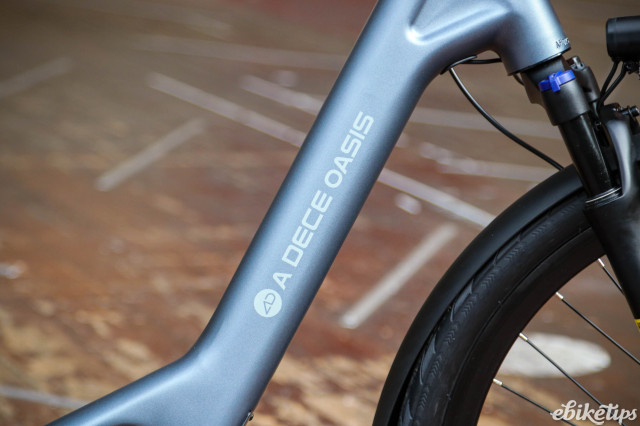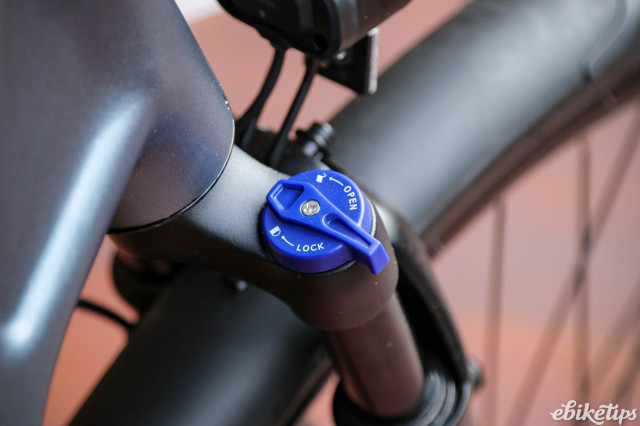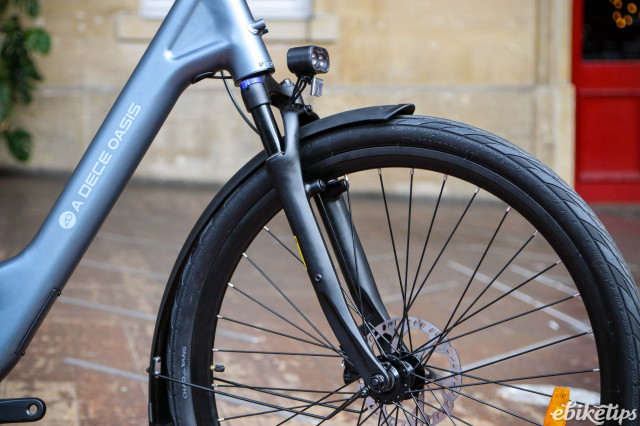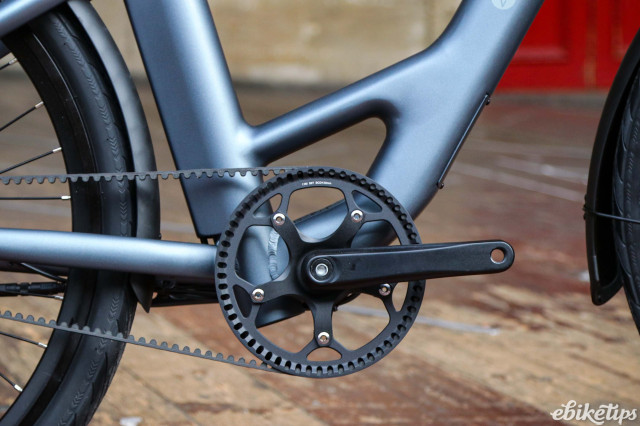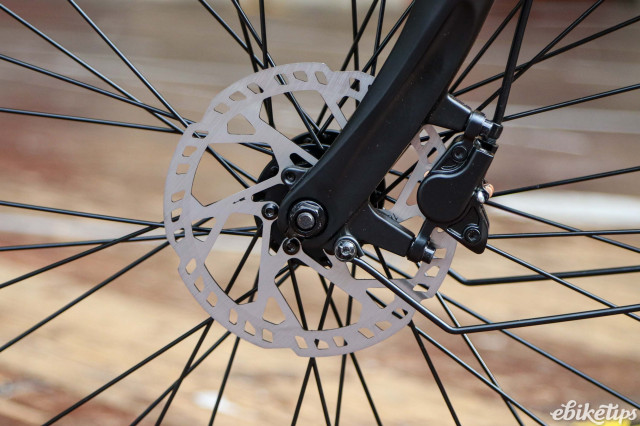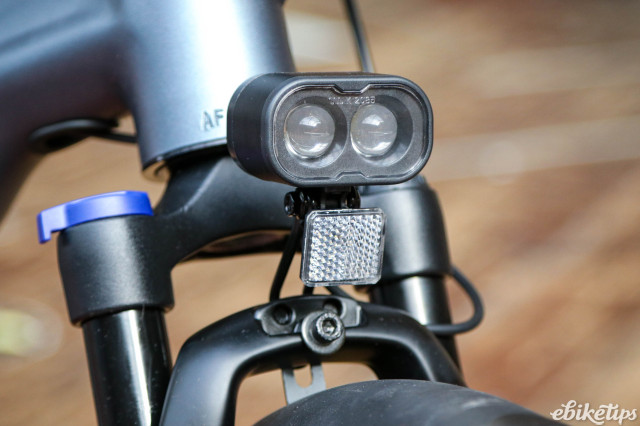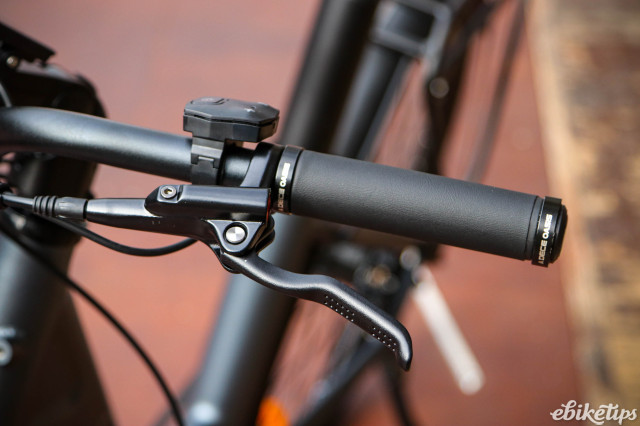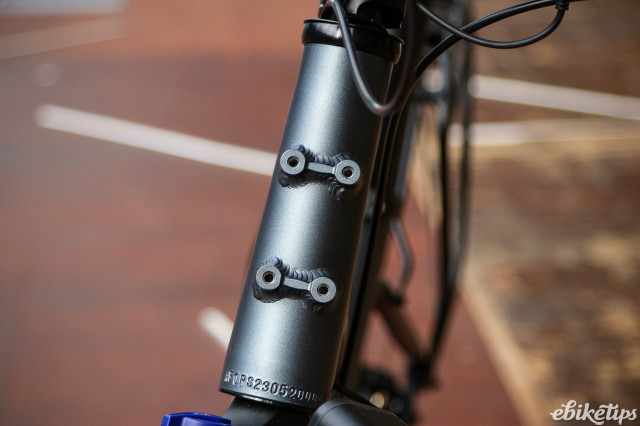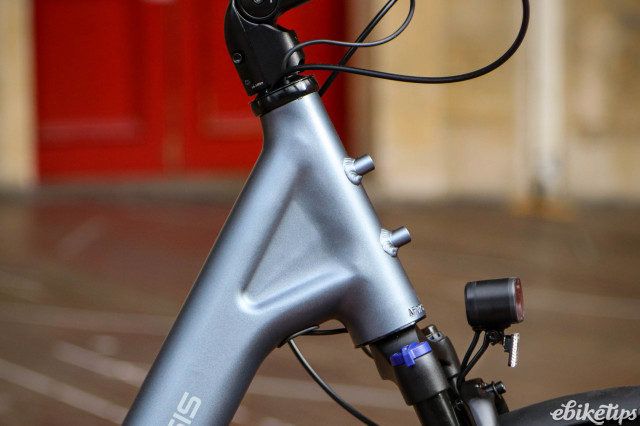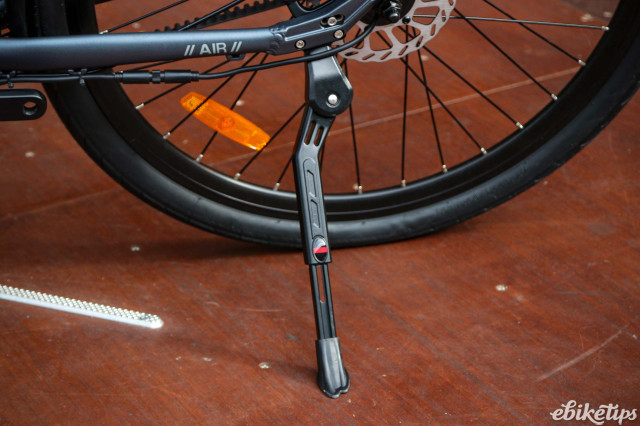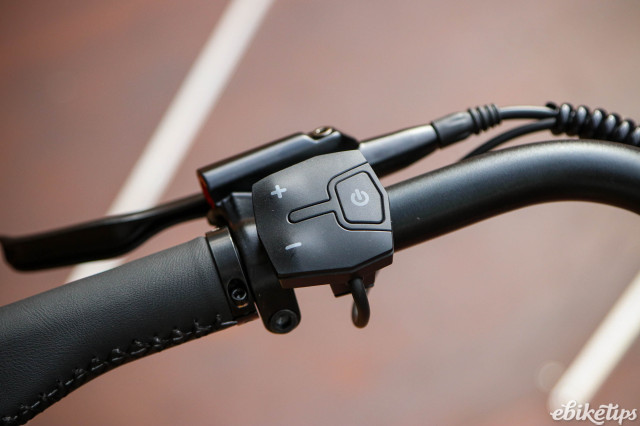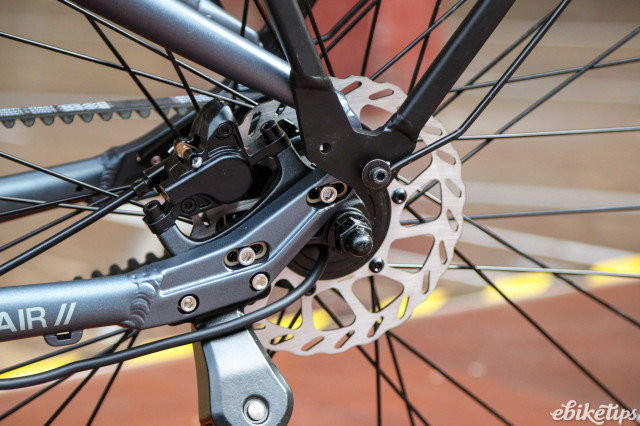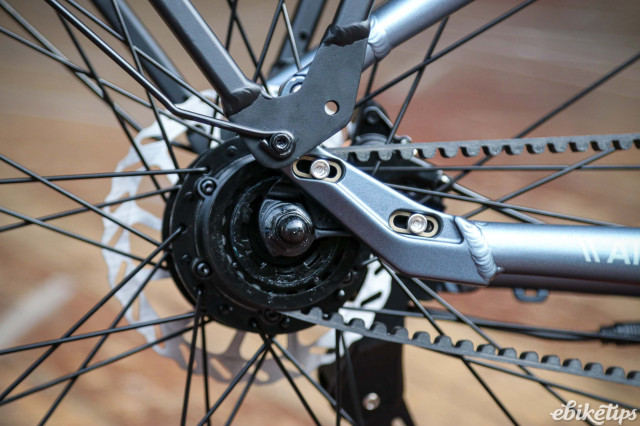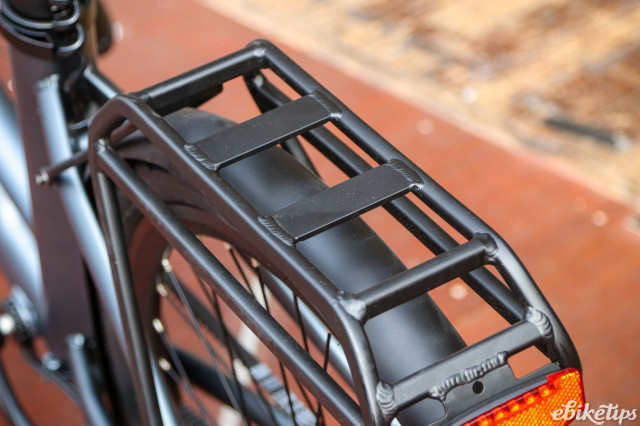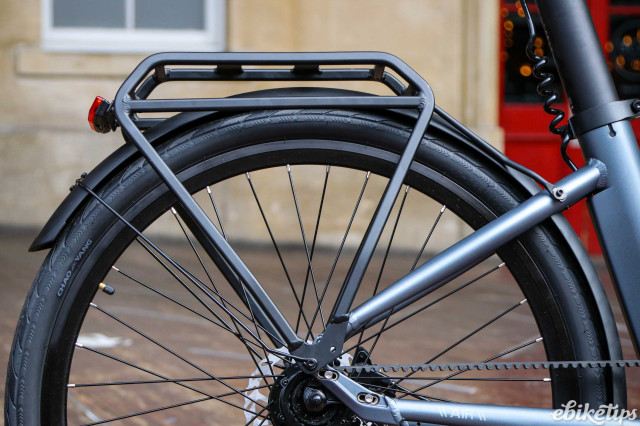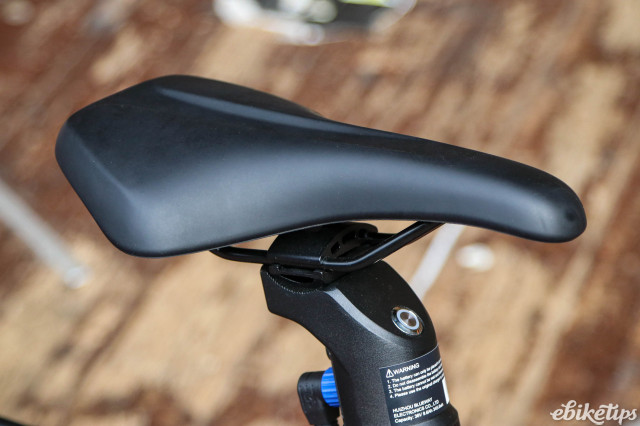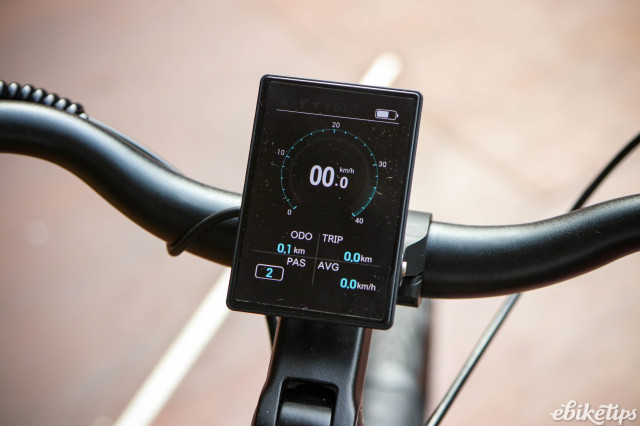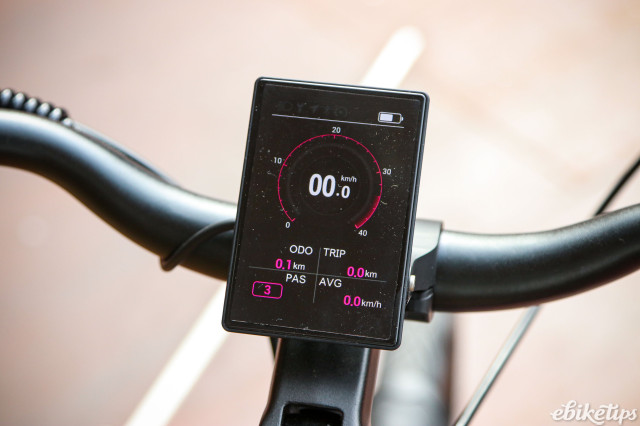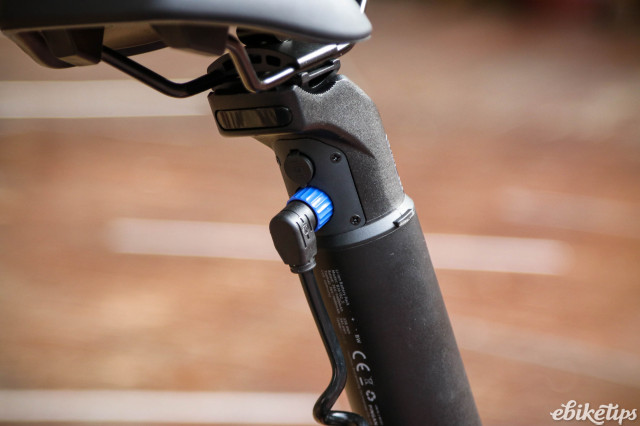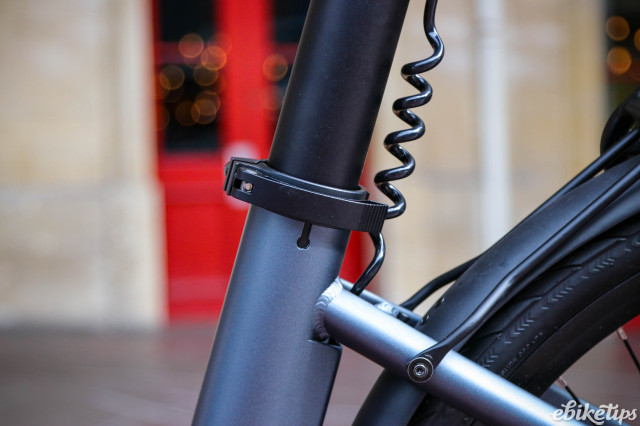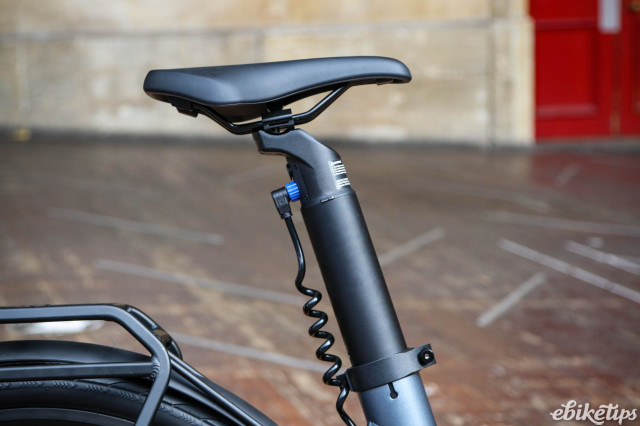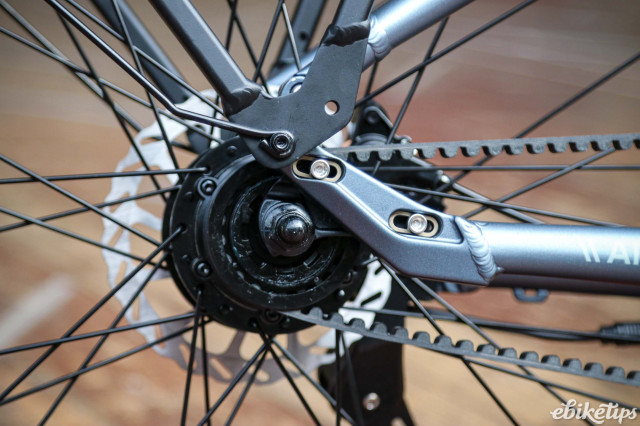Ado Air 28
Overview
- Minimal maintenance
- Good spec level for the money
- Smooth motor
- Threads full of paint
- Limited gear range
- Not a huge rider height range
ADO’s new Air 28 is priced as a budget conscious urban e-bike, but you wouldn’t know it to look at it or ride it. The spec list is decent, as are the materials used in its construction, all finished off with a smart looking digital display. There are a few minor niggles, but on the whole ADO have delivered a great all-round package for the asking price.
The ride
On the whole the Air 28 is a pleasant bike to ride and a lot of that comes down to the fact that it is relatively light at around 21kg, which means that it is easily controllable even at lower speeds. Even when travelling not much quicker than walking pace, negotiating traffic or town centres, the ADO doesn’t have that tendency to try and flop over like some heavier bikes do.
Also, even though the motor unit is hub-based, the balance of the weight isn’t significantly biased towards the rear end. The rear is obviously heavier, but not by as much as you’d expect. While this benefits the handling, it also makes the ADO easy to push (with or without assistance) and lift if you encounter steps or if you want to put it into the back of your car.
Another bonus is the power delivery of the motor. At this price point many of the systems can be a little rough around the edges, a bit old school, where the power is very on or off (like the Engwe Engine X I recently reviewed) but the ADO is much smoother.
The motor kicks in as soon as you start pedalling and cuts out as soon as you stop. You don’t get any of that overrun where the power is still pushing you forward for a second or two after you have stopped pushing on the pedals.
With 37.5Nm of torque on offer, the ADO doesn’t have the punchiest of pulling power, but it’ll still get you up to the 25km/h cut-off point rapidly enough.
Another bonus is the use of hydraulic disc brakes over cable operated options. The hydraulics give more controllable stopping power thanks to a consistent feel through the levers. They’ll easily bring you to a stop when descending and give confidence in both the wet and dry.
The ride quality of the ADO is also decent. The 1.8” wide tyres take the sting out of the road surface and if you are a fan of a bit of feedback from the road, they don’t mute it even with the level of puncture resistance they have, which can sometimes lead to a bit of a ‘dead’ ride feel.
You also get a suspension fork, which is basic, but does the job – although I must admit I left it locked out most of the time and allowed the tyres to do the job.
The rest of the contact points are well thought out too. The saddle has quite a slender design which I find reduces the chance of any numbness, while the handlebar grips are designed to mimic leather. They are relatively soft, so therefore comfortable, and the stitching is kept out of the way of your hands when riding – so no irritation there.
The Air 28 is only available in one frame size and at 1.8m tall I found the position to be well balanced, not putting too much weight on either my rear end or wrists. I’ve only got the seatpost about 25mm over the minimum insert mark though, so I can see why ADO recommend that the Air 28 is best for people over 1.6m.
The adjustable stem helps you tweak the fit too.
Specification and frameset
The Air 28 is based around an aluminium alloy frame which comes with a generous 10-year warranty. It’s available in three colours – this grey, cream and blue – and it looks to be well made. There are no ugly agricultural looking welds and I’d actually say that the frame looks modern, but with a traditional step-through look to it.
The bike we have here is a pre-production model and there were a few niggles when it came to the finish quality. The front mudguard required fitting and it looked as though the paint had been applied to the suspension fork without the threads being masked over. This meant that the bolts had been fitted, but they didn’t want to unscrew so that I could fit the mudguard stays.
I got them out in the end with the use of some pliers to loosen them before the hex head became rounded off.
It was the same when it came to fitting the rear rack which was sent to us after the bike. Again, the threaded holes were full of paint, which made things tricky to fit. Also, the rack arms had no adjustment, which meant that they required quite a bit of manipulation to fit.
It’s nothing major, it just shows a few corners have been cut in terms of the finish quality.
All the cables and hoses are run internally on the front half of the frame for a clean look, and the seat tube profile which runs the battery cabling to the motor also looks smart.
The connector for the hub to the battery sits outside of the frame under the chainstay, but waterproofing isn’t an issue. The weather conditions throughout the test period were very wet and I have had no issues with water ingress. It’s all rated to IPX5.
The bottom bracket spec is for a threaded setup with the Air 28 getting outboard bearing cups paired to the square taper axle compatible chainset. What is cool though is that rather than a chain and cassette drive system, ADO have gone for a belt drive. So, no oily components and minimal risk of mechanicals with the carbon belt having a rough lifespan of 30,000km.
It’s a quiet system too with the only downside being that it is single speed – but that is only an issue if you find yourself without battery assistance where climbing becomes a bit of a slog. You’ll spin out quite quickly once above the motor’s cut-out speed too. But if you are looking at the ADO it’s because you want to be wafted along by that 250W motor and as a pairing they work very well together.
The torque sensor mounted to the crankset ensures smooth assistance in whichever power mode you have selected. Out of the box, the 3.1” display shows three modes (four if you include off), but you can change that to five if you pair the bike to ADO’s app. You can also change the display to read miles or kilometres.
As you scroll through the different power modes, the screen details change colour which is a cool touch. The speed dial overlaid on a black background also looks very smart and up to date.
Everything is easy to control with a plus and minus button to switch between modes, while a long press on the plus turns on the front light. You also get a rear light, but that’s independent of the motor system and you have to turn it on manually.
A long press on the minus button gives you access to the walk assistance mode.
The battery, from Samsung, is located within the seatpost and has a capacity of 345Wh, which ADO says gives a range of 100km/62 miles. Like most electronic vehicles this needs to be taken with a pinch of salt as there are so many variables. Using the motor at 100% on lumpy terrain, I could get around 56km/35 miles from a full charge, so that top estimate isn’t completely out of reach if you play about with the modes on offer.
A full charge will take around six hours, which on my smart meter showed a cost of around 30p – not bad even with a range of 35 miles.
The charge port for the battery is on the back of the seatpost and, thanks to the quick release seat clamp, the battery is removable for charging away from the bike. The seat clamp is lockable too, so not just anyone can take the battery if you leave the bike unattended.
Finishing things off are a solid set of wheels with aluminium rims and plenty of spokes both front and rear. Both use solid thread axles with 15mm track nuts to keep everything secure.
The tyres are made by Chao Yang and as I said earlier, they have a pretty good ride quality, and the grip is fine as well. At 1.8” wide they aren’t limited to tarmac though and will easily cope with bridleways or canal paths to give you options.
Puncture proofing looks to be good, which alongside the belt drive should see the ADO prove a hassle-free ride.
Value and competition
The Ado Air 28 is currently available for 'pre-sale' with shipping due to commence towards the end of the month. It’ll cost you £1,299, which I’d say is a good price all things considered.
The belt-driven Honbike Uni4 is a similar, yet slightly funkier design. With an aluminium frame and single-speed setup, it costs £1,799. You can’t remove its battery either.
The Tenways CGO800S is another belt-driven single-speed that we rate highly, but that one’s another £100 again at £1,899.
If you aren’t too bothered about a belt drive and want the wider range of traditional gears, then the Estarli e28.8 is a similarly designed bike in its Trapez shape with the dropped down tube. With guards and lights, it’ll cost you £1,650 which is a lot of bike for the money, which further highlights what good value the ADO is.
Conclusion
The gear range limitations and slightly rough around the edges finish to the threaded mount holes are the only things I can really criticise the Air 28 for. Other than that, it’s a comfortable and capable bike to ride wherever you fancy with the bonus of minimal maintenance in terms of the drivetrain. The price is impressive too.
